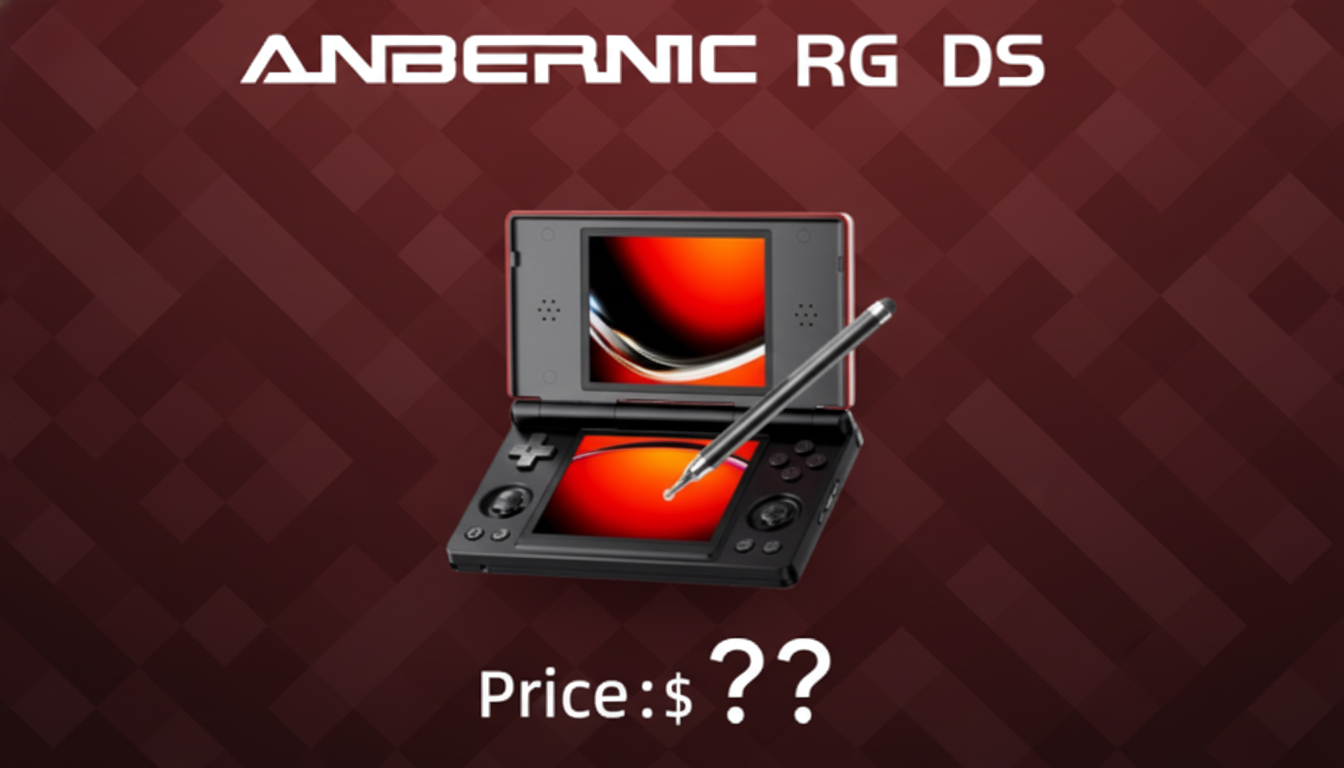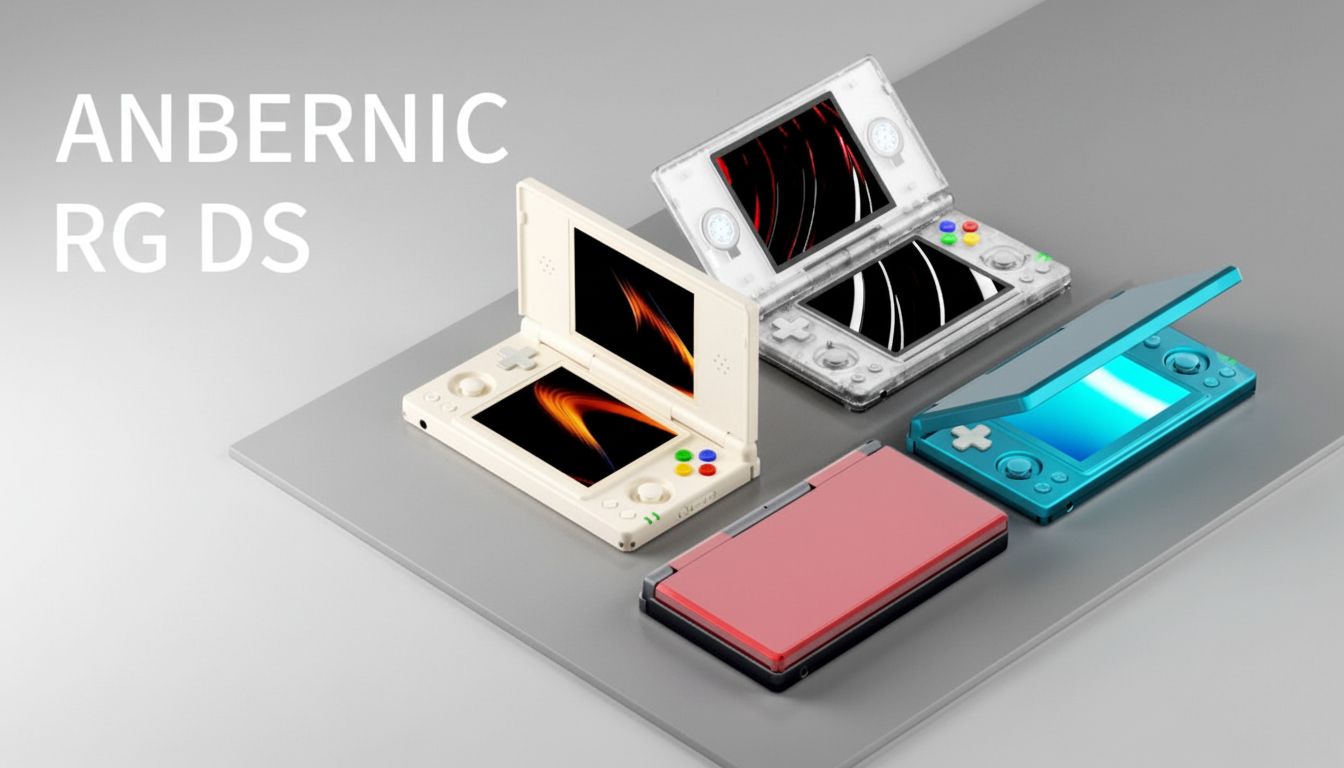An AliExpress listing that briefly went live pulled together the rest of the spec sheet: dual 4-inch 640×480 IPS panels, a Rockchip RK3568 platform with 3GB of RAM and 32GB of internal storage. None of these choices drive the cost up, but they do explain why the RG DS isn’t going to be a high-performance system. The pulled storefront page confirms that the device’s ergonomically designed clamshell has two identically sized 640×480 IPS displays. Powering it is a Rockchip RK3568, a Cortex-A55 quad-core SoC with a Mali-G52-class GPU, 3GB of RAM, and 32GB of storage. All of these specifications will be familiar to anyone who’s used a recent affordable retro handheld, and they place the RG DS reasonably low down the performance ladder. The budget-conscious buyer clearly sees some benefits in the dual displays. However, it’s also easy to see several significant and plausible compromises staring out from the RG DS’s spec sheet, especially for DS purists and emulator enthusiasts.
- Dual 4-inch 640×480 IPS displays
- Rockchip RK3568 (Cortex-A55 quad-core) with Mali-G52-class GPU
- 3GB RAM and 32GB internal storage
- Ergonomic clamshell design
- Emphasis on affordability over high performance
Screen resolution and scaling implications for DS games
On paper, 640×480 is a neat 4:3 match for the Nintendo DS’s 256×192 per-screen aspect. However, the math lands at a 2.5x scale factor of 640/256 and 480/192, not an integer 2x or 3x. Non-integer scaling requires interpolation, which blurs pixel corners and can add shimmering during scrolling—effects that are particularly exaggerated in pixel art or text-heavy scenes.

For comparison, a 640×480 4-inch panel averages 200 PPI. That is sufficient, but it will not create the mirror-clean blocks that an integer-scaled display would on something less than half the resolution. Assume clean aspect adherence, but not the precise per-pixel, cookie-cutter appearance that many retro fans are looking forward to.
RK3568 performance and emulator support limitations
The RK3568 is a known low-power workhorse in the handheld scene; however, it is not a high-performance chip. Community usage on related RK3566/3568 systems indicates good outcomes up to and including 8- and 16-bit systems, PlayStation, and Dreamcast or PSP at standard speeds. However, harder emulators and extra features relying on greater single-core throughput and contemporary GPU drivers will struggle.
That’s where DS emulation enters the picture. According to the Google Doc, the RG DS will be greatly reliant on the DraStic emulator, which is speedy and mature but lacking key ecosystem niceties like RetroAchievements and advanced upscalers. Modern emulators, such as MelonDS, which contributors report benefit from enhanced clock speed, accurate timing, and GPU pipelines, will barely be consistent speed-wise on an RK3568, particularly with enhancements turned on.
3DS performance expectations on RK3568-based devices
As for 3DS, expectations should remain low. The Citra team’s recommendations and user reports suggest that RK3568-class devices can only handle the very simplest 2D titles at playable rates, with most 3D games failing to sustain performance. Any promotional clips of 3DS gameplay should be taken as best-case scenarios rather than as common occurrences.

Pricing context and comparisons under the $100 target
How the price compares: “Under $100” is the slogan, and it’s a sexy one. Today’s best dual-screen handheld under $100 is the AYN Thor Lite, which starts at around $259 and comes with a more powerful platform. Then there’s the $75 Retroid Twin Display Add-on: a brilliant clip-on OLED that assumes the presence of another handheld with video-out capabilities.
Anbernic’s pricing approach is straightforward: to deliver the DS appearance and basic DS performance at the best possible price. The dual IPS panels, the moderate SoC, and the median memory profile are all designed to keep the BOM costs low. The preliminary AliExpress page mentioned a $108.99 pre-order price, but prior teasers imply that the “real” price will remain under $100 once listed on the company website.
Outlook for dual-screen handhelds and buyer advice
Two-screen portables haven’t been a major force this year but have surged off the back of premium clamshells from AYANEO and AYN. Anbernic, overcoming its slow start to become by far the most prolific maker in Android handhelds, has been experimenting wildly with form factors; it has the slider-style RG Slide; it’s building a 4:3 metal clamshell; and it is always iterating based on community feedback. If the RG DS nails its build and ergonomics, and if demand is confirmed, it’s entirely possible that a higher-spec successor will be produced.
For purchasers: if you desire authentic dual-screen vibes and trustworthy DS playback for under $100, these leaked specifications make sense. We know you’re going to get pretty decent IPS panels, good enough portability, and smooth performance with DraStic. This isn’t the screen for you if you demand pixel-perfect integer scaling. It isn’t the device for you if you need MelonDS edge accuracy or realistic DS performance. Put differently: the price is explained by the leak. The screens; the silicon; the compromises are smart. And that’s the ideal trade-off for many of you. For the remainder, the premium competitors’ profiles are looming overhead.

